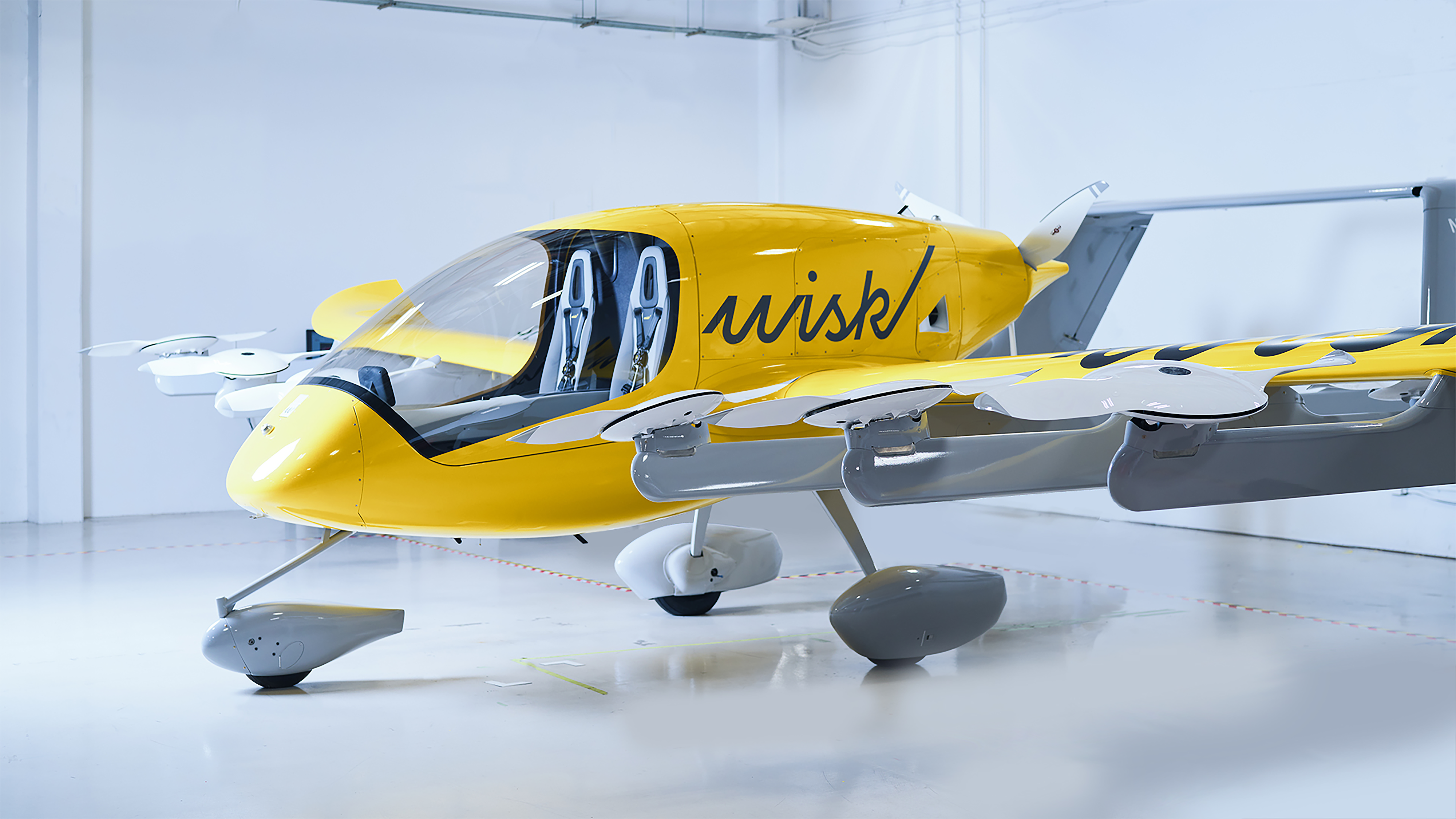Click Here to View This Page on Production Frontend
Click Here to Export Node Content
Click Here to View Printer-Friendly Version (Raw Backend)
Note: front-end display has links to styled print versions.
Content Node ID: 419381
Boeing is investing a further $450 million in its Wisk Aero eVTOL joint venture with Kitty Hawk. This morning, Wisk stated that the funding will support efforts to certify what it described as its sixth-generation fully autonomous eVTOL design, which is set to replace the fifth-generation Cora two-seater prototype that the company says has now logged almost 1,500 flight tests.
In a January 24 media briefing, Wisk and Boeing declined to provide any performance details or specifications for the new eVTOL, indicating that further announcements will be made later in 2022. They have also refused to publish a projected timeline for type certification, insisting that they don’t want to prejudge how long regulators will take to declare the aircraft and its proposed autonomous flight operating model to be safe.
Nevertheless, Wisk intends to operate 14 million eVTOL air taxi flights each year across a network of 20 cities within five years of the FAA clearing the aircraft for production. CEO Gary Gysin told reporters that it expects to launch operations with around 2,000 eVTOL vehicles, implying that each would make an average of 19 flights each day, with a duration of between 10 and 25 minutes.
According to Wisk, the initial air taxi services will be in the U.S. but it later intends to seek certification in other jurisdictions, most notably Europe. “We don’t want this to only be a premium service,” he said. “We want the flights to be affordable for new college graduates commuting to work.”
For Boeing, the further investment in Wisk signals its intention to hold a significant stake in the advanced air mobility (AAM) sector. This intent had seemed in doubt in September 2020, when the U.S. aerospace group closed its Boeing Next Innovation. Its European rival Airbus invested in two eVTOL technology demonstrator projects and in September 2021 announced plans to bring a four-passenger, fixed-wing model called CityAirbus to market in 2025.
Wisk will not reveal how much capital it has raised so far, despite claiming to be one of the best-funded eVTOL start-ups. Gysin indicated that a company should expect to spend at least $1.5 billion to get a new aircraft into production and commercial service.
“With this investment, we are reconfirming our belief in Wisk’s business and the importance of their work in pioneering all-electric, artificial-intelligence-driven, autonomous capability for the aerospace industry,” said Boeing’s chief strategy officer, Marc Allen. “Autonomy is the key to unlocking scale across all AAM applications, from passenger to cargo and beyond.”
Wisk was formed back in 2010 under the name Zee Aero and later merged with Kitty Hawk, an eVTOL aircraft start-up launched by Google co-founder Larry Page and vice president Sebastian Thrun. Following an earlier undisclosed investment by Boeing, the Mountain View, California-based start-up was reconstituted in December 2019 as a 50:50 joint venture between its two main backers. The company says it is now one of the best-funded private companies in an AAM sector that has seen several of its leading rivals opt to go public following mergers with special purpose acquisition companies (SPAC).
“We’re happy to be privately funded, and very few companies will survive this journey,” Gysin said when quizzed as to why Wisk had not followed rivals like Joby, Archer, and Lilium by taking the SPAC-backed path to Wall Street. One obvious benefit is avoiding the investor disclosure obligations that come with public equity listings, and the pressure to make aggressive entry-into-service and revenue pledges to financial backers.
Brian Yutko, Boeing’s vice president and chief engineer for sustainability and future mobility, repeatedly stated that the aerospace giant is taking a patient, long-term approach to its investment in the AAM sector while explaining that it will be providing the Wisk team with extensive engineering support. “We have a multi-year runway and will take the long view, putting safety first,” he commented. "We like the fact that Wisk has achieved some important firsts with autonomous [eVTOL] flights."
According to Gysin, Wisk intends to start its own Part 135 commercial operation for the proposed air taxi services and will partner with specialist providers for supporting technology and infrastructure, such as air traffic management and vertiports. He suggested that at a later stage, the company might choose to appoint operating partners to expand its planned AAM transportation network.
The closely guarded secret that is Wisk’s sixth-generation eVTOL is the object of a bitter intellectual-property lawsuit in which it is accusing rival eVTOL developer Archer of stealing its design by recruiting senior engineering personnel. Archer, which is working to bring a four-seat vehicle into commercial service by the end of 2024, strenuously denies the allegations and is counter-suing Wisk. Design drawings from a patent application that Wisk filed in January 2020, show a larger airframe than the Cora eVTOL, with six sets of forward-facing propellers and vertical lift rotors installed on booms from the main wing.
